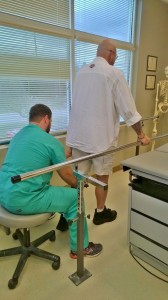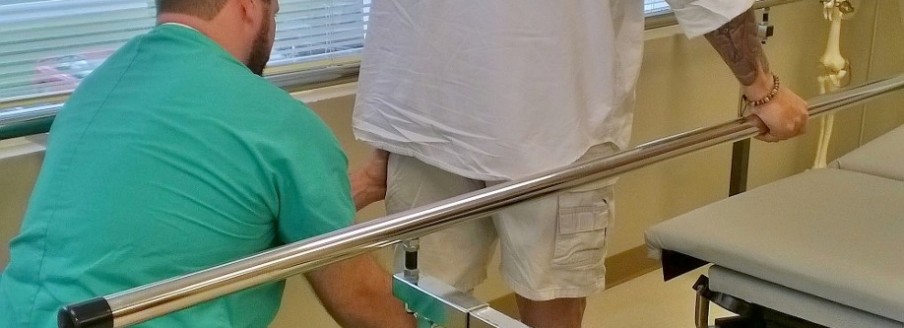Why Your Prosthetic is Missing the Mark (And How You Can Fix It)
Friday, December 12th, 2014 | Prosthetics | No Comments
 By Carey Bunch, CPO/L, Prosthetist/ Orthotist
By Carey Bunch, CPO/L, Prosthetist/ Orthotist
The key ingredient to a good relationship with your prosthesis is a good fit. A poorly fitting prosthetic limb will quickly drain your energy and can lead to a great deal of pain. There are several areas of particular concern when it comes to ensuring a proper fit.
Reasons for poor fit
The biggest issue for amputees, regardless of lifestyle, is change in size of their residual limb. Many different things can lead to this change. One of the most common causes that we encounter is swelling due to fluid accumulation (or edema). Edema is an ongoing battle and can really affect the fit of your prosthesis if not managed properly. The good news is edema can be managed with various thicknesses of socks or various adjustments that can be made by your prosthetist.
Another issue that almost every new amputee faces is the fact that the limb typically reduces significantly in size over the first year. This occurs first from the swelling associated with the healing process. Once the healing process draws to an end the swelling reduces. Then the muscle tissue begins to get smaller because they are not being used in the same way that they were prior to amputation.
Regardless of the reason, change is expected whether it be changes in the limb or your goals or activity level. Routine maintenance and follow up is a crucial step in ensuring that your prosthesis is meeting your needs. You will eventually need to replace all or part of your prosthesis. The socket system in particular will need to be changed or adjusted routinely to ensure proper fit and balance and to provide an optimal linkage with your limb. This linkage is vital in order to optimize your control over the prosthesis. Staying ahead of these changes will give you the best chance at meeting your desired activity level and goals.
What to do
With these thoughts regarding poor fit in mind, here are several things to consider in order to ensure optimal fit for your prosthesis. To combat edema, it is very important to make sure that shrinkers or bandaging are used for compression therapy. This will help to maintain a stable limb size and ensure that the prosthesis is fitting properly.
Also, consider how long you’ve had your prosthesis and whether you need something different to meet your desired goals. This could be as simple as a bit of routine maintenance or a slight adjustment to the ankle-foot system or the knee system, or as complex as completely replacing your prosthetic limb to meet your desired activity level. The bottom line on proper fit is creating the right prosthesis system to allow you to live the lifestyle you desire without pain and suffering.
Schedule a consult
If you are suffering from issues related to poor prosthesis fit, you should consider making a trip to a qualified prosthetist to discuss modification or replacement of your current prosthesis. Give Premier Prosthetic Center a call today at (865) 474-7096 or schedule a consultation online with our highly-qualified staff and we’ll get you started on our specialized fitting process that creates a prosthesis for your unique lifestyle.

